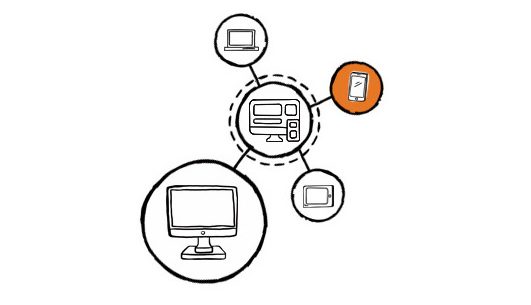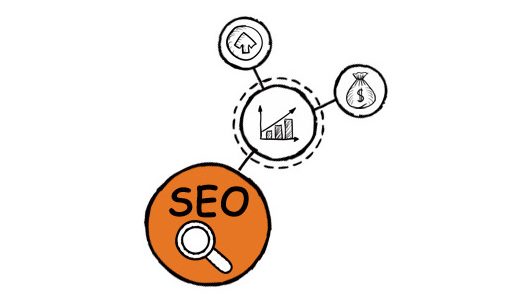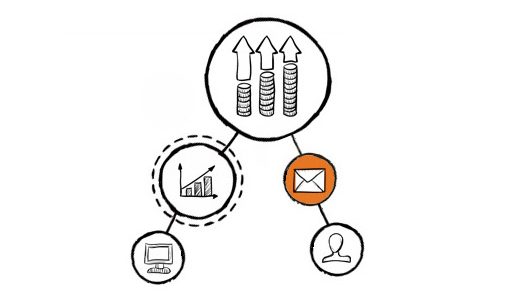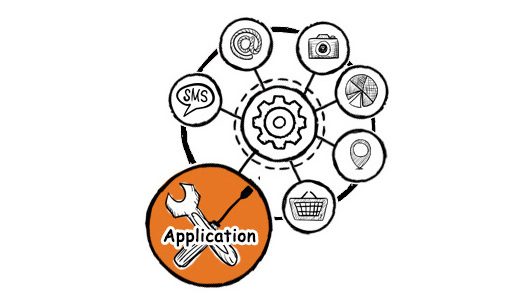If you run your own business or work in marketing there is pressure to have your products and services talked about online everywhere. It feels like there are new digital marketing channels to review every week. How do you prioritize channels? It’s not easy, but a good start is to go back to your marketing plan and look at your marketing objectives.
By the end of this article you will:
- Have knowledge of the most popular digital marketing channels
- Be able to identify which channels will help your business
- Be able to analyze the performance of each channel
- Be in a position to update your plan
- Email Marketing
Email marketing can be in different formats:
- Website visitors who have signed up to receive communications can be sent ongoing, content-based emails.
- Email subscribers who frequently open communications or who have purchased from you. This group could be segmented for special discounts/communications.
- Visitors who have gone so far through the site e.g. to the shopping cart, but then have abandoned the site. Personalized emails can be sent to persuade them back.
Costs: You will need an email provider like Campaign Monitor to provide the tools to run the campaign. The most basic packages are free, but if you have more than 2000 subscribers and/or want some add-on features then costs start at $10 per month. You may also want an HTML email template designed which will incur a cost. If you’re looking for someone to write all the messages and are prepared to purchase email addresses from someone else’s database then there could be some significant fees.
When to Use: Use it from the very start of your business. It’s an effective way of building a relationship with your customer database.
Drawbacks: Email providers are low in price, but setting up automated emails can be complex and mistakes can be made.
- PPC Advertising
PPC stands for Pay per Click. These are the advertisements appearing on the right-hand side of the Google search engine results page or the results with the little green “Ad” tag. Businesses bid on specific keywords they are expecting their target market to be searching on. The more specific your keywords the more targeted your advertising. The term PPC also includes banner advertisements etc.
Costs: Click costs vary enormously. The more companies competing for a keyword the higher the click fee. You may also find a better response if you develop a targeted landing page so that when a visitor clicks on your ad they go directly through to a page which takes them to specific content.
When to Use: You should achieve an immediate response but at a cost. Only use when you have carefully worked out your budget, when you can spend the time managing the campaigns (or can afford to pay someone) and when you know your website can successfully push them through the sales process. Drawbacks: PPC must be carefully managed. It can be a quick way of spending a huge amount of money. You’re also not building any sort of marketing platform.
- SEO
SEO stands for Search Engine Optimisation and as a loose definition encompasses making any changes to a website that are designed to make it more appealing to the search engines. The more relevant your information to the search query the higher you will appear in the search engine rankings. The 3 main activities in SEO are link building, content creation and on-page optimisation. For small, local businesses there are a range of specific SEO best practices to ensure their websites appear when local search terms are queried.
Costs: If you have the time and willingness to plough through the website tutorials and work on your website then many SEO activities can be completed by a small business owner. There are no shortcuts with this work and often it is an outsourced activity.
When to Use: Ideally have your website built so it is search engine friendly right from the start.
Drawbacks: If your product or service is operating in a highly competitive environment then just doing SEO could take a long time to have any impact. The job is never completely finished as the competitive market changes and the search engines tweak their algorithms.
- Content Marketing
The Content Marketing Institute defines content marketing as “A strategic marketing approach focused on creating and distributing valuable, relevant, and consistent content to attract and retain a clearly-defined audience and ultimately, to drive profitable customer action.” Example pieces of content are blog posts, case studies, videos, infographics. The idea is to get your proposition in front of your target market and then continually engage with them as they move through the sales process. Costs: Similar to SEO this is a task you can do yourself, but is also a time consuming task that can be outsourced. If you’re going to outsource you must invest the time ensuring the person understands your business. When to Use: If you have some great, relevant content then use it. Drawbacks: Great content usually takes a long time to produce and expect just a few pieces to pick up any interest.
- Organic Social Media Marketing
This is also known as creative social marketing and it is developing profiles on the social media sites where your target audience is most active – we’re talking about Facebook, LinkedIn, Twitter etc. If your target audience is largely quiet on these channels then your marketing efforts should be spent elsewhere.
Costs: It’s free, but it takes time and of course if you are going to produce specific content there is a cost to this. Video content has proven to be very popular and frequently shared. Whilst we can all dream of a quick viral hit it is sadly unlikely, and in any case, long term brand recognition, as a result, is not proven.
Drawbacks: It’s a long shot to make much progress in this channel plus you are also opening up a very public way for previous customers to document their complaints.
- Paid Social Media Marketing
This is PPC on social media channels and is an accelerated way to get to your target audience on social media. Only use if you have the systems in place to turn followers who click on ads into real leads and have the time to manage the campaign.
Costs: Fees are normally on a cost per click (CPC) or cost per 1,000 impressions (CPM). Like PPC, costs can quickly get out of control. Campaigns need to be carefully set up.
- Online PR
Online PR is working to get you mentioned on the relevant top industry websites. Online PR is only going to work if you genuinely have something worth talking about.
Costs: If you have the contacts and the time then, of course, the best thing is to handle discussions yourself otherwise you will need to pay a PR retainer.
Drawbacks: Investing in paid ads at least guarantees that your product or service will get in front of your target audience with PR there is no guarantee. If what you have to say doesn’t stand out then all your time and money could amount to nothing.
- Affiliate Marketing
Typically affiliate marketers receive a percentage commission based on the number of sales conversions received. Affiliates may simply be existing customers providing leads or it may be a company specializing in affiliate marketing. Drawbacks: Affiliates are not your employees but have to trust them to sell your company correctly and you will have to put in time and money to motivate them.
- Viral/Referral Marketing
Dropbox and Uber are marketing dreams wherefrom recommendations and businesses have dramatically grown. If you are thinking of incentivizing your customers to recommend you then firstly you must ensure your customer base is happy with your service. You will also need to set up a system to record referral bonuses.
- Free Web Tools & Apps
Perhaps this could be a bit of a gimmick, but if you can develop a tool or app that your target audience likes and shares with their friends who are all part of your target audience then this could make all the difference. Of course, the challenge is coming up with something that no-one else has thought of. The cost of development could be tiny in comparison to the value of leads.
- Forums
For any business this is an activity that can take up a huge amount of time and give very little return. If you have the time and commitment in the long term it may result in some positive results.
Your Marketing Plan
Step 1 : Know your business
Goals
Before you can begin the process of choosing which marketing channel to work with you need to know your business goals, your budget and what you are prepared to do yourself.
Driving sales leads is normally the primary objective. All other goals are usually building up to this objective. Typical goals are:
- X of e-commerce sales
- X email sign ups
- X on-site video views
- X social media followers
It’s a good idea to have key goals and then some individual goals for each marketing activity.
How quickly do you need to see results?
How quickly you need results will decide what marketing channels you use.
Who is your target audience?
It’s always tempting to give a broad brush answer to this, but if you take a little time to describe your target audience you will find yourself going back to this document to direct your marketing. To help you define your audience answer the following:
- What are my target customer demographics?
- What pain points do my customers have that my product or service resolves?
- Where are my customers spending time online?
- How receptive are my customers to advertising?
- What types of offers are my customers most likely to respond to?
What’s your budget?
If you’re planning a PPC campaign across several countries or looking at building a complex web tool then you will need to allocate a significant budget. If you’re thinking of some targeted content marketing then it is time rather than external spend. If you have a small budget then it is better to do a few channels well than trying to spread yourself across every place your target audience goes online.
Do you have any relevant expertise?
Are you a good networker? Are you good at writing web copy? Do you know anything about SEO? If you have the time and can commit to the work then you could make significant savings to your marketing budget.
Step 2 : Current Channel Performance
Skip over this if you’re a brand new business…
So, for each of your channels have a look at:
- Your inbound visitor sources – use Google Analytics to track where people are coming from when they land on your site. In Google Analytics you can look at how many visitors are coming from Organic Search, Direct, Social Media and Referrals.
- Create a channel tracking spreadsheet so you can compare channels. Typically, people compare unique visitors, sign-ups, conversions to active users, conversions to paying customers and campaign spend.
And then of course, analyze to work out which channels attract the most successful customers for the least amount of money.
Step 3 : Create a Channel Plan
If you’re new to digital marketing start with 1 to 3 channels and do them well. If it’s not obvious which channel to work with then do a simple rating for each channel by:
- Impact – the size of the opportunity, based on audience reach, search volume and other factors
- Confidence – how confident you are in your ability to capture and convert that audience
- Effort – how much effort you anticipate each channel will take to execute
So, let’s assume I am selling Vegan Baby Food online in the UK and having already made some progress through Google Adwords I need to up my sales. Perhaps you’re trying to decide between 2 channels – paid Facebook Ads and SEO.
Impact:
Facebook – millions of users, although not all of them will be interested in vegan baby food, it is a safe assumption that most people with babies are between 20 and 45 and will be using Facebook. Potentially Facebook has an impact.
SEO – The potential impact is limited by the number of people actively searching for vegan baby food online. Google Keyword Planner can help with giving you some ideas on how many people are searching on specific keywords and if you are already using Google Adwords you can obtain even more detailed information.
And of course, you will need to take into account budget. Initially, selection of a channel is part data, part gut feel. At some point, you have to take the plunge.
So, in this instance, Facebook should get a higher impact score than SEO.
Confidence:
To allocate a confidence score you need to think about how likely it is that traffic driven to the site will convert into sales. Traffic from paid search is far more likely to convert into a sale because the visitor has been actively searching whereas with Facebook you are effectively looking to catch someone off guard who will make a purchase. SEO won’t convert as highly as paid search as you will often rank for long-tail keywords. SEO will beat Facebook.
Effort:
This is referring to how much effort (time and money) to make the channel work.
Facebook ads are fairly low effort, especially if you’ve done them before. They are relatively quick to set up and you may already have a suitable landing page from a PPC campaign. If you haven’t, you’ll need to put a relevant landing page up and don’t forget you will need to pay for each click so there is an investment of money as well as time required.
With SEO, there is an enormous amount of time to optimize pages, get together content and instigate backlinks. To get on the first page of Google for any popular keywords is going to be a challenge and take a lot of effort.
So, there you have it. From that, you can work out a rating for each one and then work out where you should spend your time and money.
Before you implement it is worth noting how you are going to measure success.
I would give any new channel at least 3 months so your analysis of results can have some validity.
Step 4: Implement, Analyze and Adapt
Gather your chosen performance data and work through the results.
If things aren’t as expected are they because of the channel or how you are using the channel?
Are there any channels significantly outperforming the others?
Have the current channels thrown out ideas for other channels to explore?
Learn from mistakes and don’t be scared to pull out of a channel.






